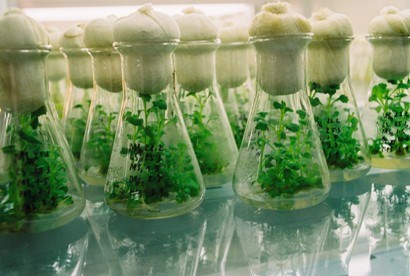
Relevant agencies are applying themselves to preserving and optimising genetic resources in Vietnam, one of the countries with the richest biodiversity in the world.
 |
| Relevant agencies are applying themselves to preserving and optimising genetic resources in Vietnam, one of the countries with the richest biodiversity in the world. |
Relevant agencies are applying themselves to preserving and optimising genetic resources in Vietnam, one of the countries with the richest biodiversity in the world.
About 49,200 species have been found in Vietnam so far, including 7,500 microorganism species, 20,000 terrestrial and aquatic flora species, and 10,500 terrestrial fauna species. The country is ranked 16 th in the world in biodiversity.
However, such biodiversity is now under threat from over-exploitation, increasing natural disasters, outdated agricultural cultivation methods, population expansion and rapid urbanisation nationwide. Additionally, Vietnam is one of the five countries most vulnerable to climate change, which is getting worse around the globe.
Facing an urgent need for the conservation and sustainable use of genetic resources, a national strategy on biodiversity was approved by the Prime Minister in July 2013.
A number of laws on natural resource management have been issued, such as the Law on Fisheries, the Law on Forest Protection and Development, the Law on Environmental Protection, the Law on Water Resources and the Law on Biodiversity. They serve as a legal foundation for local communities to conserve genetic resources.
There are 164 special-purpose forests with a total area of nearly 2.2 million hectares (accounting for 7 percent of Vietnam’s natural areas), including 30 national parks, 58 natural reserves and 11 sanctuaries. They are home to 90 percent of the endangered species in Vietnam.
By the end of 2013, more than 30 community-based activities assisting with the management and development of agricultural plant genetic resources had been carried out with participation from 16,000 local officials and farmers.
The main conservation methods are field gene banks, seed banks and in vitro gene banks. While seed banks had conserved 1,000 varieties of 35 seed plant species, in vitro gene banks had successfully protected 200 forest plant varieties by late 2013.
The Animal Experiments and Domestic Animal Conservation Centre under the National Institute of Animal Sciences alone is preserving 87 breeds of 75 freshwater aquatic species. Meanwhile, about 22,000 microorganism species are being preserved at eight institutes and universities nationwide.
From the conserved genetic resources, several high-yield varieties of rice, soy, vegetables and sweet potatoes have been created and successfully grown over a widespread area.
While some quick-growing species of eucalyptus and acacia have been selected for cultivation to serve as papermaking materials, genetic resources of herbal plants have been used to increase supplies of raw materials for medicine production. Genetic resources have also been utilised to expand the farming of specialty domestic animal breeds such as those of pigs, chickens, ducks and cows.
Experts have also generated highly productive, high-quality cross-breeds of carp, tilapia and tra fish. For example, NOVIT4 is a new, popular tilapia breed that grows fast and adapts well.
While only 50 to 100 genetic resources were used to create new breeds each year in the past, conservation agencies are now providing thousands of genetic resources for scientific and technological organisations to research and develop each year.
(Source: VNA)





